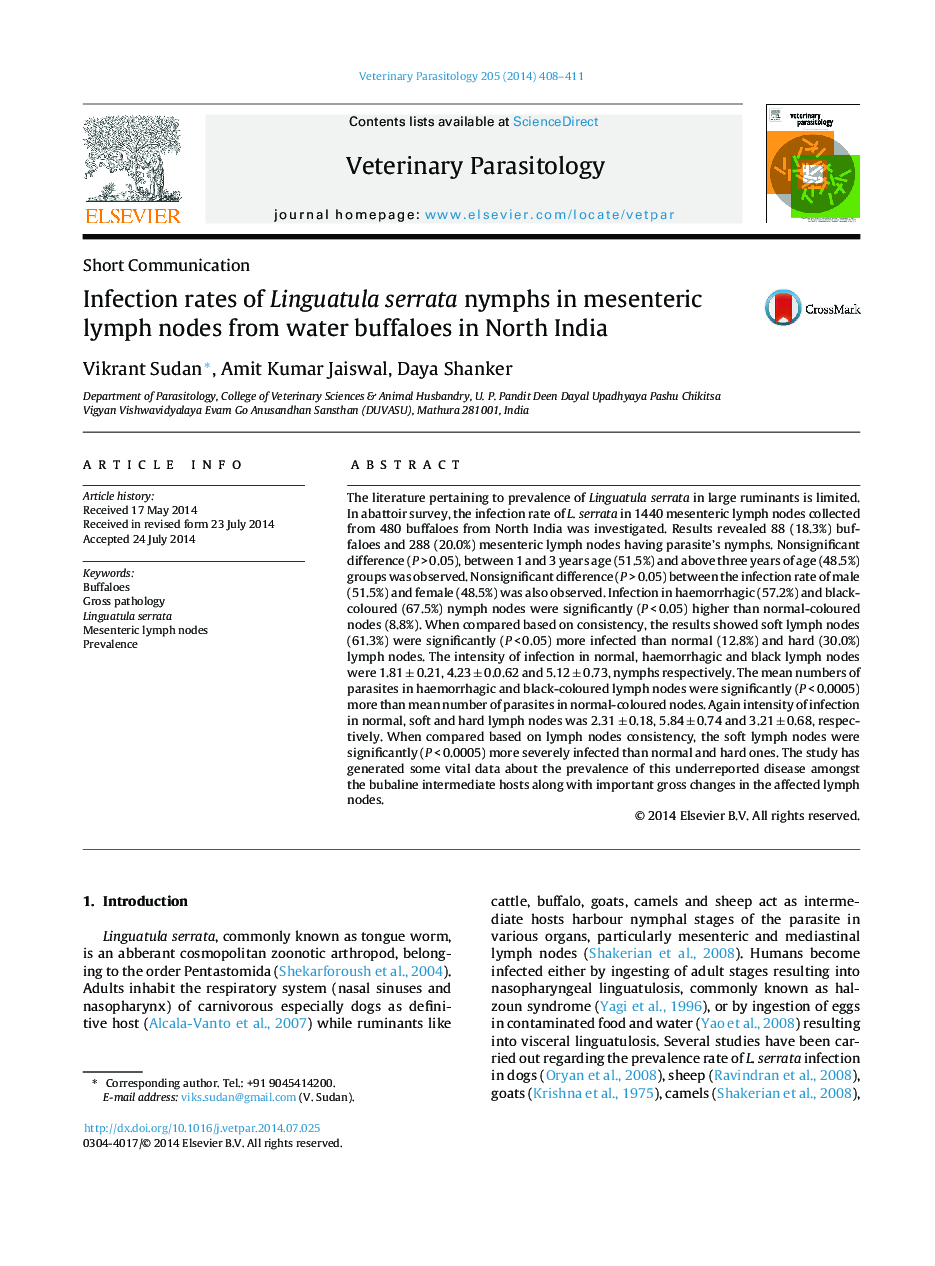| Article ID | Journal | Published Year | Pages | File Type |
|---|---|---|---|---|
| 5803278 | Veterinary Parasitology | 2014 | 4 Pages |
The literature pertaining to prevalence of Linguatula serrata in large ruminants is limited. In abattoir survey, the infection rate of L. serrata in 1440 mesenteric lymph nodes collected from 480 buffaloes from North India was investigated. Results revealed 88 (18.3%) buffaloes and 288 (20.0%) mesenteric lymph nodes having parasite's nymphs. Nonsignificant difference (P > 0.05), between 1 and 3 years age (51.5%) and above three years of age (48.5%) groups was observed. Nonsignificant difference (P > 0.05) between the infection rate of male (51.5%) and female (48.5%) was also observed. Infection in haemorrhagic (57.2%) and black-coloured (67.5%) nymph nodes were significantly (P < 0.05) higher than normal-coloured nodes (8.8%). When compared based on consistency, the results showed soft lymph nodes (61.3%) were significantly (P < 0.05) more infected than normal (12.8%) and hard (30.0%) lymph nodes. The intensity of infection in normal, haemorrhagic and black lymph nodes were 1.81 ± 0.21, 4.23 ± 0.0.62 and 5.12 ± 0.73, nymphs respectively. The mean numbers of parasites in haemorrhagic and black-coloured lymph nodes were significantly (P < 0.0005) more than mean number of parasites in normal-coloured nodes. Again intensity of infection in normal, soft and hard lymph nodes was 2.31 ± 0.18, 5.84 ± 0.74 and 3.21 ± 0.68, respectively. When compared based on lymph nodes consistency, the soft lymph nodes were significantly (P < 0.0005) more severely infected than normal and hard ones. The study has generated some vital data about the prevalence of this underreported disease amongst the bubaline intermediate hosts along with important gross changes in the affected lymph nodes.
